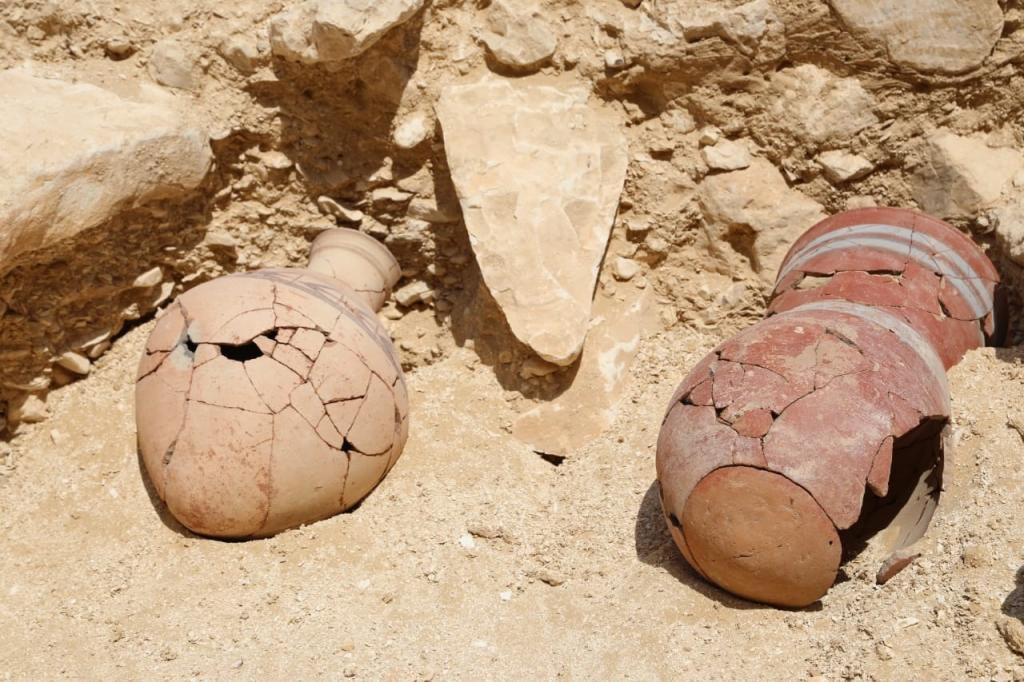- Egypt: The opening of a sarcophagus, turned into a television show
- Zahi Hawass.The mystery of the tomb of Cleopatra and Marco Antonio
In the search for the tombs of Nefertiti and Anjesenamón , wife of Tutankhamen , Zahi Hawass has encountered three findings that redraw the valleys of the ancient Pharaonic Thebes and put a face on those who housed them: an industrial zone, about thirty workshops and a royal burial that still retains the tools that served in its construction.
"It is not the first time that we talk about tombs but it is the first time that tells the story of the people who built them," he says in conversation with THE WORLD Hawass, the most charismatic and controversial representative of Egyptology. The former Egyptian Antiquities Minister announced on Thursday from Luxor, about 600 kilometers south of Cairo, the discoveries of the mission he has been leading since December 2017.
The first of the findings is an area used as a sort of "industrial estate" by the workers who helped dig the eternal rest of the monarchs of ancient Egypt. The area is located in the western section of the tourist Valley of the Kings, a section that popularly receives the name of the "Valley of the Monkeys" by the dozen of apes represented on the walls of the tomb of Ay, the pharaoh who succeeded Tutankhamen and with which Anjesenamón was handcuffed after his premature death.
The moor houses a furnace used to cook clay products and a water tank that quenches workers' thirst. In its network a ring of beetles and hundreds of embedded beads and gold objects have also been dusted, which were used to decorate the coffins of the pharaohs that were buried and began life in the vicinity. The remains include knitting needles, used in the construction of furniture, and wood fragments.
The Egyptian mission led by the incombustible Egyptologist has also unearthed some 30 workshops . A labyrinth formed by warehouses and buildings in which the funeral furniture was cleaned or ceramics deposited dating back to the 18th dynasty. Hawass says he has found royal tomb number 65 of the Valley of the Kings, a statement that arouses certain misgivings.
"The KV65 contains tools used to build the tombs themselves, such as those needed to carve furniture. We have also found different types of food and vegetables such as onions or garlic that were left as offerings, the remains of an acacia and a large bar to introduce the furniture, "the expert details to this newspaper, determined to find the grave of the Tutankhamun family (1336-1327 BC).
In search of the two queens
"I'm still looking for the graves of Tutankhamun's wife, Anjesenamón, and Nefertiti," Hawass emphasizes. His theory, which he continues to maintain, suggests that the burials of both queens - which were, in turn, mother and daughter - could be found in the western branch of the Valley of the Kings. "I think they could be in the space that exists between the tombs of Amenhotep II and Ay, " he glides hopefully.
"I am convinced that I will find them. No one has excavated before in that place. I do not know, however, if it will be soon. Perhaps they will appear tomorrow or in two years," replies the most famous face of the native Egyptology. Hawass inaugurated the mission after his sonorous confrontation with the British Nicholas Reeves and his hypothesis, today ruled out by local authorities, of the existence of the Nefertiti burial chamber in supposed hidden spaces behind the west and north walls of the tomb of Tutankhamen .
Since then, Hawass has also taken on the task of inspecting the surroundings of the punished grave of the "pharaoh child", with radar assistance, in search of new cavities belonging to children and widows of kings of the 18th dynasty. " I am looking for new royal tombs hitherto unknown in the vicinity of the burial of Merenptah [son of Ramses II]," says the archaeologist, reluctant to provide more details. In their vicinity, they once sought eternity Ramses VII, Hashepsut and Ramses III.
Until now, Hawass's greatest success was tracing the family tree of Tutankhamen. "We discovered through these techniques that his father was Ajenatón and that Queen Tiyi was his grandmother. It was really surprising. I never imagined that DNA could relieve such secrets," Hawass confessed a few years ago in an interview with this newspaper. The results of the research - published in early 2010 together with the finding that malaria and bone disease caused the premature death of Tutankhamen - have now encouraged a new phase of the project, hunting for the lost family of the ephemeral pharaoh. "The valley hides many secrets," concludes Hawass.
According to the criteria of The Trust Project
Know more- Science and Health
- science
Climate crisis Starts the great commitment to the UN climate: give voice to young people and wake up rulers
Angiostrongylus cantonensis The parasitic worm that transmits meningitis and has been found in Mallorca
Climate crisis The last five years have been the warmest ever recorded, according to the UN

